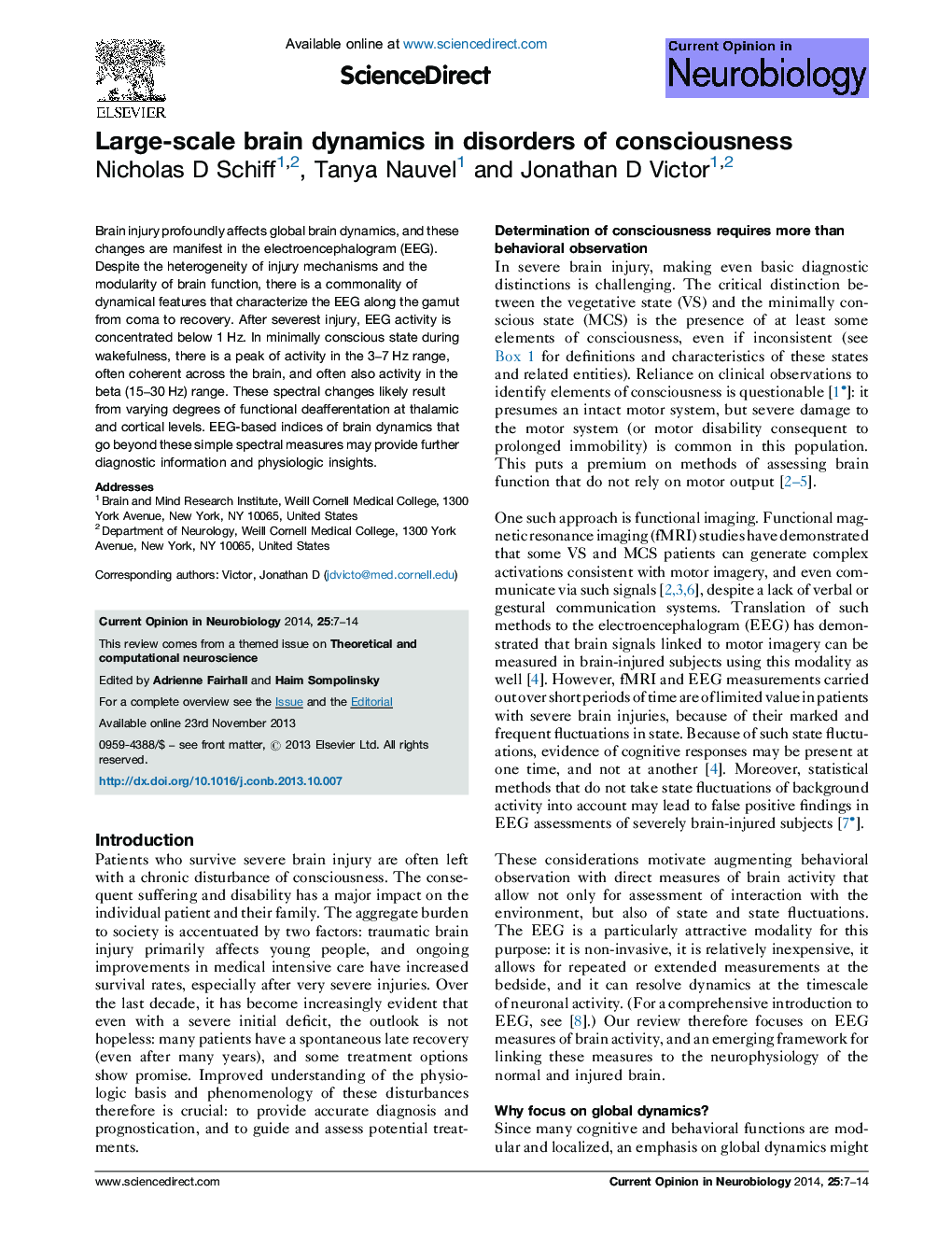| Article ID | Journal | Published Year | Pages | File Type |
|---|---|---|---|---|
| 6266518 | Current Opinion in Neurobiology | 2014 | 8 Pages |
â¢EEG assays brain dynamics directly; behavioral observations rely on motor output.â¢In vegetative state, EEG power is largely confined to very low frequencies (<1 Hz).â¢In minimally conscious state, EEG power peaks in the 3-7 Hz range.â¢These findings likely reflect varying degrees of functional deafferentation.â¢Dynamical indices beyond spectral measures may also prove valuable.
Brain injury profoundly affects global brain dynamics, and these changes are manifest in the electroencephalogram (EEG). Despite the heterogeneity of injury mechanisms and the modularity of brain function, there is a commonality of dynamical features that characterize the EEG along the gamut from coma to recovery. After severest injury, EEG activity is concentrated below 1Â Hz. In minimally conscious state during wakefulness, there is a peak of activity in the 3-7Â Hz range, often coherent across the brain, and often also activity in the beta (15-30Â Hz) range. These spectral changes likely result from varying degrees of functional deafferentation at thalamic and cortical levels. EEG-based indices of brain dynamics that go beyond these simple spectral measures may provide further diagnostic information and physiologic insights.
